Entering the main flood season, all kinds of flood control and flood fighting "black technology" assisted rescue and disaster relief
Entering the main flood season, flood control and flood fighting work in many places across the country has entered a critical stage. In cities and rivers, high-tech flood control equipment and innovative flood control tools have been used everywhere. Flood control baffles, unmanned rescue boats and other "black technologies" have played an important role in emergency rescue and disaster relief.
Improve efficiency, patrol dikes, check risks and install the "eagle eye" of science and technology
Before the storm and flood disaster, the flood control pressure of the dam increased due to the rising water of the river. How to carry out the dangerous inspection of the dam accurately and efficiently? Let’s first meet such an intelligent robot.
The total length of dikes in small and medium-sized rivers in China is nearly 400,000 kilometers. Every year, dangerous situations such as piping, leakage and collapse of dikes are the main causes of burst floods, which can easily lead to group deaths and group injuries. After receiving the information of rainstorm and flood disaster, it is very important to conduct dike danger inspection quickly and efficiently, accurately lock the dangerous position and report the dangerous situation to prevent and resolve major disasters such as dam break.
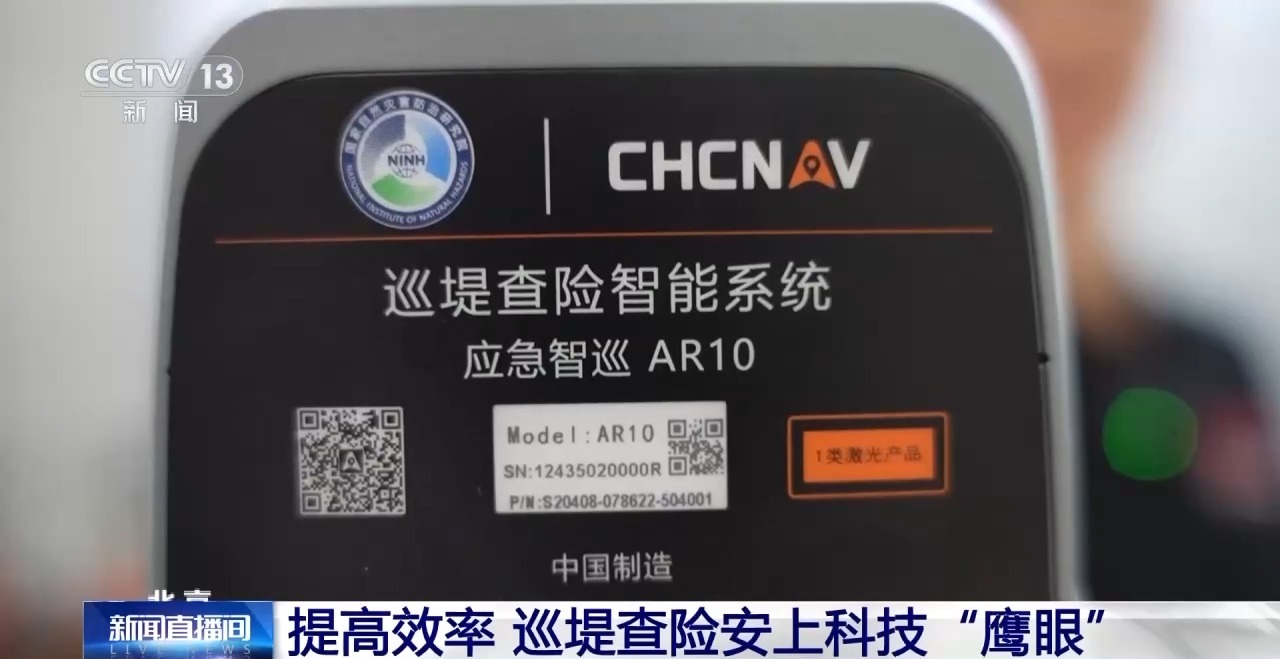
CCTV reporter Guorong Tang:This equipment, called Emergency Intelligent Patrol AR10, is a black technology specially used to inspect the river embankment. Its weight is less than 1kg, and it can be carried under the drone to realize 24-hour uninterrupted dangerous inspection of the river. The results of the inspection will also be fed back in time through a piping detection software on the computer. The green spots on the map are the relatively safe places on this river, and the five places marked in red are the dangerous places such as piping and leakage. With such reports and results, it can help river maintenance personnel to quickly locate the place and deal with the dangerous situation.
According to reports, in the past, the inspection of dikes mainly relied on manual inspections, and the inspection distance per hour was only four or five kilometers. The inspection process took a long time and could not be monitored around the clock. There were also high risks of operators in extreme environments and misjudgments. This emergency intelligent patrol AR10 can work safely 24 hours a day, and can complete the river patrol within 20 kilometers in one hour, with the missing rate below 5% and the false alarm rate below 30%, which greatly improves the patrol efficiency.
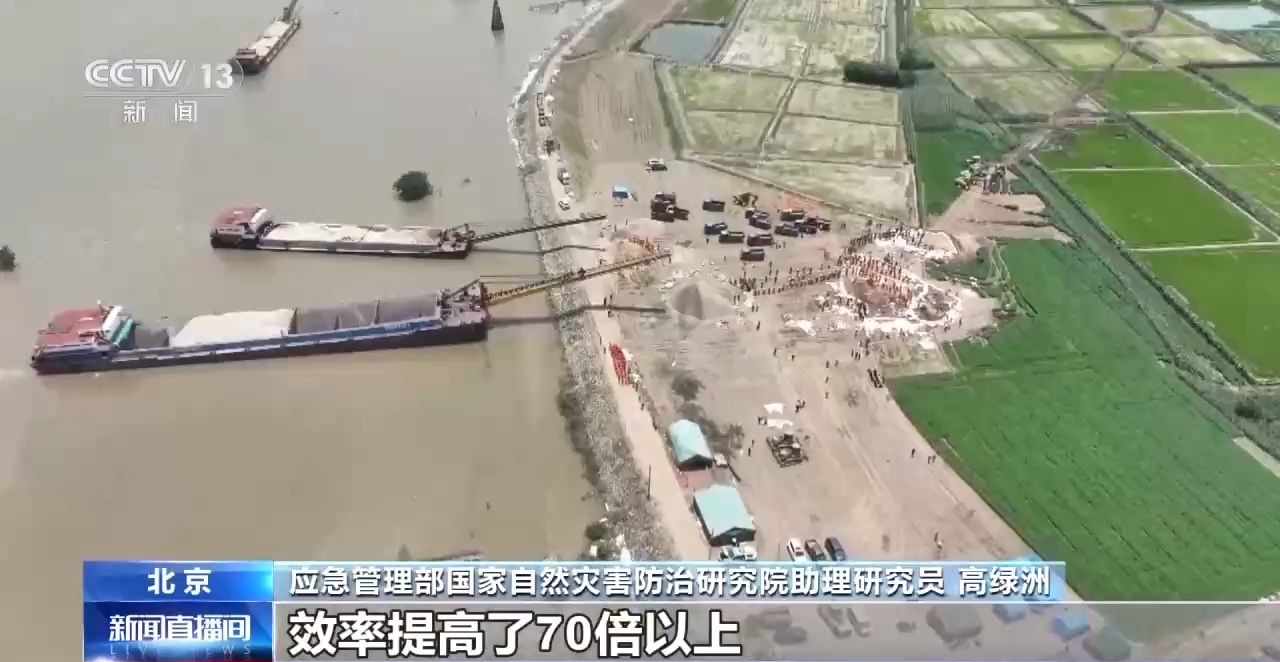
Gao Oasis, Assistant Researcher, National Institute of Natural Disaster Prevention and Control, Ministry of Emergency Management:The biggest feature of this equipment is that it can accurately and quickly inspect the dike danger through multi-sensor integration and artificial intelligence identification algorithm. At present, this set of equipment has been applied in many dangerous scenes in China. In 2024, when Tuanzhou embankment in Dongting Lake, Hunan Province broke, we used this equipment to inspect the embankment 15 kilometers between Qiantuan dikes for half a month, and found out 19 dangerous places, and established an interpersonal cooperative dike danger inspection mode, which improved the efficiency by more than 70 times compared with the traditional manual inspection, effectively alleviating the problems existing in manual inspection of dikes.
According to reports, at present, the equipment has carried out dike inspection in 12 provinces in 7 major river basins across the country, with a cumulative cruising mileage of more than 2,000 kilometers, and 175 piping leakage hazards have been identified, effectively preventing the risk of dike breach in small and medium-sized rivers.
L-shaped flood control baffle — — Water retaining weapon for urban flood control
In case of water accumulation caused by rainstorm or flood in the city, the light and efficient L-shaped flood baffle is a common weapon to stop water. This baffle adopts modular design and has the characteristics of high waterproof and compressive stability. The baffle is pressed to the ground by water pressure to form friction to enhance stability, and it will not topple even if the flood exceeds the top. It can be built quickly before the rainstorm and flood disaster comes.
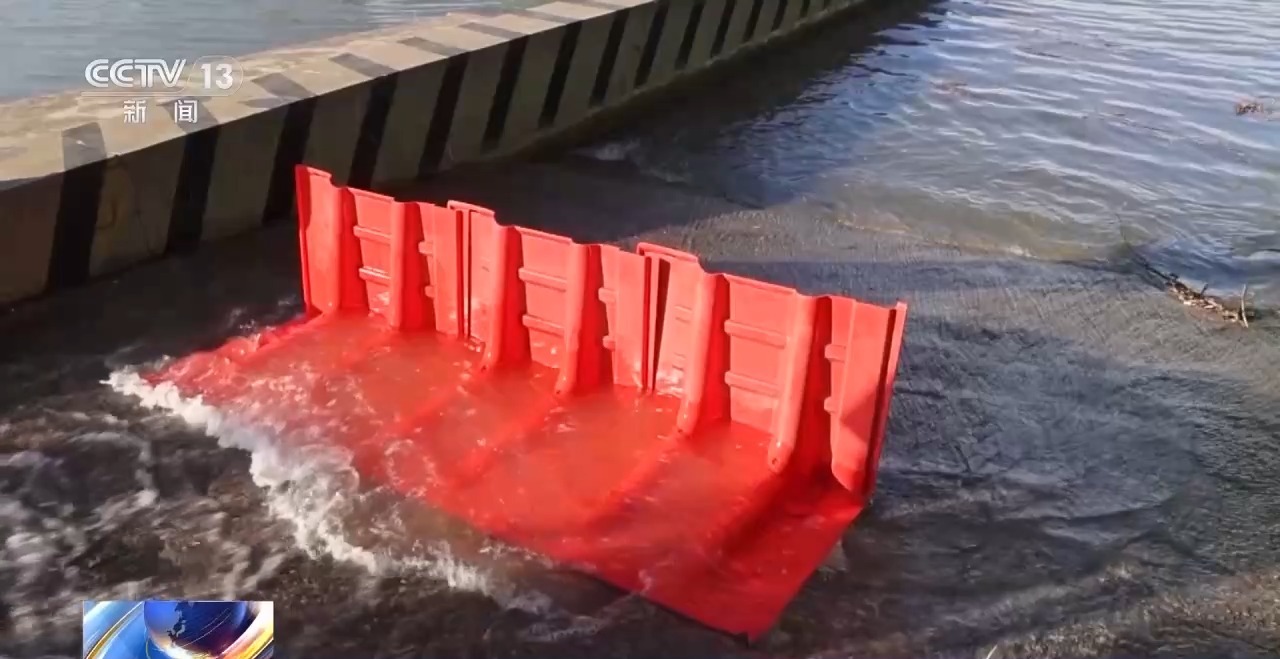
Han Lei, 1st Squadron of Rescue Base of Wuhan Branch of the Third Engineering Bureau of China Anneng Group:The L-shaped flood control guide plate is easy to install, and a 10-meter-long flood control retaining wall can be built in one minute, which is more than 10 times more efficient than traditional sandbags. The whole body is made of ABS material, and the single weight is only 1kg, which is corrosion-resistant and beautiful, and can be used continuously for more than 10 years. It is especially suitable for emergency flood control in urban low-lying areas.
A number of new intelligent water rescue boats have been put into practical application.
When rainstorm and flood disasters occur, people often get trapped in water or rivers. Facing the stormy water environment, how can we ensure the personal safety of trapped people and rescuers? A number of new intelligent water rescue boats have been put into practice and actual rescue.
In recent years, in all kinds of water rescue drills, new unmanned rescue equipment, such as unmanned aerial vehicles and flying rescue boats, have played an important role in working in harsh environments and the speed of rescuers. Among them, a flight rescue boat developed by Sichuan Fire Fighting Co., Ltd., as the first unmanned combat equipment invested this year, is particularly eye-catching in water rescue. It can quickly fly to the drowning person from the air by remote control by the operator on the shore, provide a lifesaving floating body, and pull the drowning person back to the shore from the water surface.
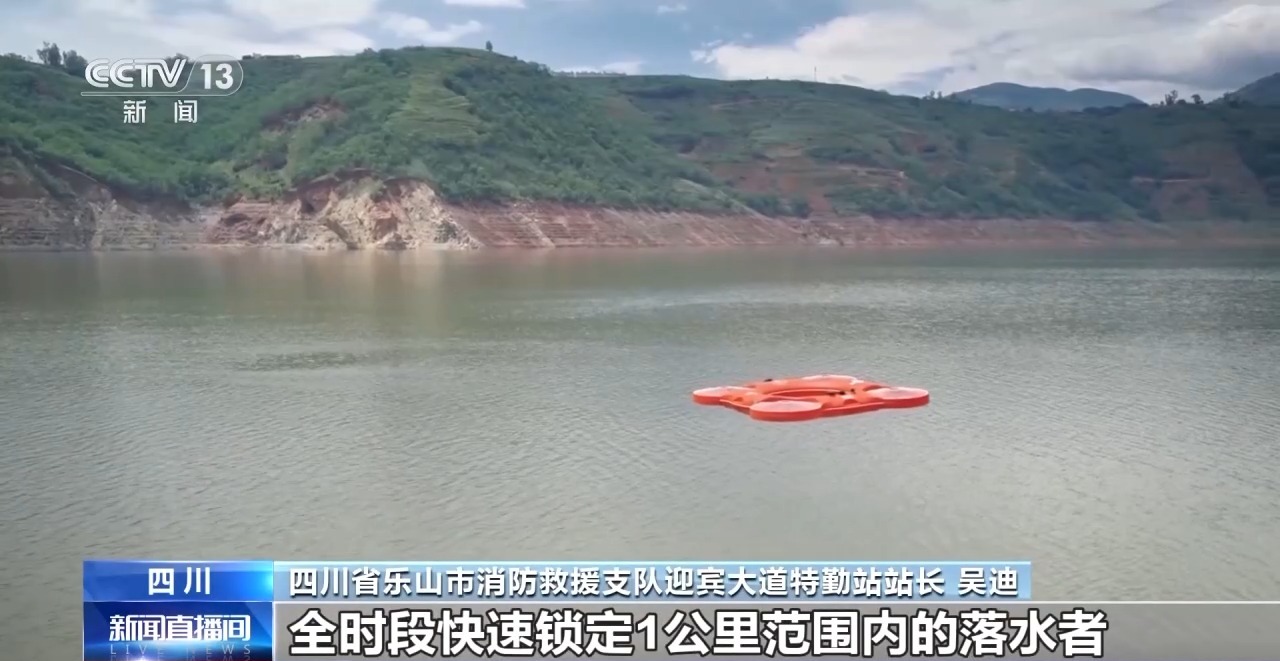
Wu Di, stationmaster of Yingbin Avenue Special Service Station of Leshan City Fire Rescue Detachment, Sichuan Province:The flight rescue boat has the ability of air flight and surface navigation at the same time, and can take off normally in the environment of strong wind and (strong) magnetic field interference. When rescuing in complex waters, rescuers can launch rescue operations only by remote operation, which greatly reduces the risk of firefighters in water rescue. In addition, the equipment can also quickly lock the drowning person within 1 km at all times through its high-definition pan/tilt and infrared night vision system, which greatly increases the survival probability of the drowning person.
In addition to the speed of rescue, in the actual disaster relief process, how to rescue as many trapped people as possible in a harsh environment is also the key to rescue. A kind of equipment called self-righting rescue boat has solved this problem well. It is also called "I-shaped rescue tumbler", which is suitable for transporting people and materials under extremely harsh and difficult conditions and can carry 6-8 people at a time. The reason why it is called "tumbler" is because of its unique design. No matter what happens on the water, it will not capsize.
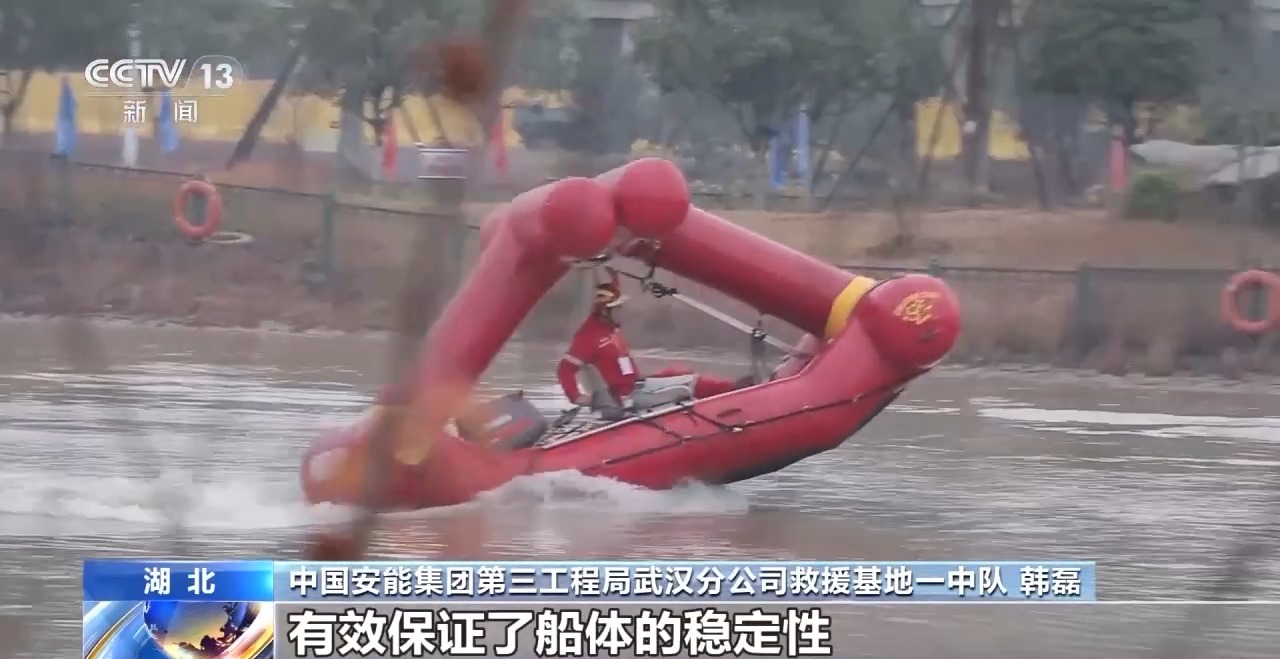
Han Lei, 1st Squadron of Rescue Base of Wuhan Branch of the Third Engineering Bureau of China Anneng Group:The self-righting lifeboat adopts a unique triangular design, and the structure of double round cylinders on both sides makes the center of gravity all in the center of the ship, effectively ensuring the stability of the hull. Even if it is inclined by 90 degrees, it will not turn over, ensuring the safety of users. The maximum speed is 62 kilometers per hour, which can quickly start rescue.
Self-righting lifeboats are simple, fast and reliable in transportation, which makes up for the shortcomings that ordinary rescue boats are difficult to rescue under harsh conditions such as rapids, huge waves in the sea and rolling dams. Because of its multi-layer composite material, it can effectively prevent stabbing and scratching. The "tumbler" not only improves the rescue efficiency, but also provides reliable survival guarantee for people in distress, and plays an irreplaceable role in actual combat.
Communication rescue equipment ensures the transfer of personnel in the "three broken" isolated island
When storms and floods occur in remote areas such as mountainous areas, it is easy to form rescue "islands" with damaged infrastructure such as communications, electricity and transportation, which brings severe challenges to rescue and disaster relief. How to restore communication and rescue isolated islands, various localities have explored different solutions and scientific and technological means.
In extreme disasters, it is easy to cause large-scale damage to infrastructure such as communications and transportation, leading to "three breaks" — — The situation of disconnection, network disconnection and power failure makes the trapped people in an information island, which brings severe challenges to emergency rescue and disaster relief. The "Xinglitong" emergency call terminal independently developed by the National Institute of Natural Disaster Prevention and Control is a satellite communication terminal equipment that has just come out this year and is used by grassroots people. Accurately lock the trapped person through the thermal imaging lens of the drone and deliver it to the trapped person by throwing it in the air of 100 meters. Xinglitong can realize the functions of self-targeting, voice guidance to trapped people, one-click disaster reporting and so on, and successfully set up a communication network between trapped people and external sources.

Jiao Qisong, Associate Research Fellow of National Institute of Natural Disaster Prevention and Control:We will prefabricate the phone number of the local command center or rescue department before delivering this phone. One-click call mainly solves the problem that people can’t operate the terminal when they are in a panic and it is difficult to aim at the star.
Xinglitong has well solved the practical difficulties such as harsh requirements and complicated interface operation of traditional satellite phones. At present, the technology has been finalized and put into mass production, and the application of this terminal will effectively open up the "last mile" of reporting disaster information at the grassroots level.
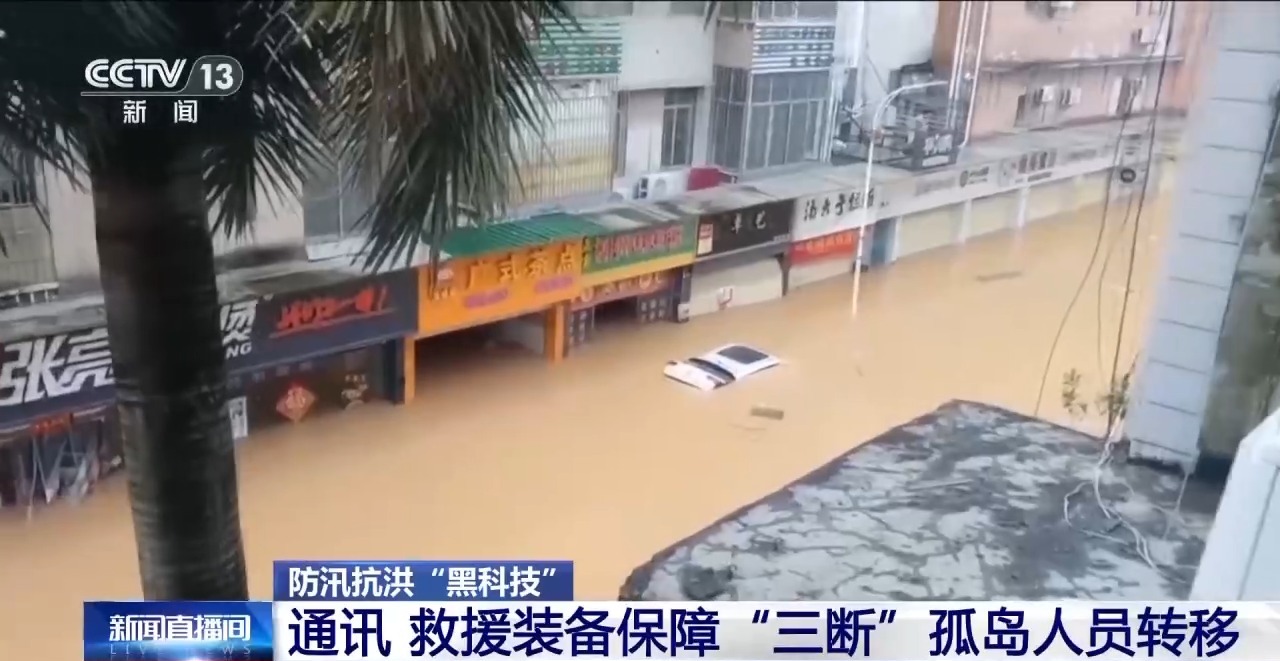
In addition to allowing the trapped people to communicate with the outside world, how to supply the trapped people with materials and the subsequent transshipment work requires a more complete air support system and aviation emergency construction. In June this year, influenced by the typhoon "Butterfly" superimposed high-altitude trough and monsoon, Huaiji County, Zhaoqing, Guangdong Province was hit by a once-in-a-century flood. Some villages were seriously affected, traffic was interrupted, and people were trapped by floods, making rescue difficult. Faced with the situation that the land was completely blocked and the people were almost trapped in an isolated island, the local emergency response mechanism was launched at the first time, and three emergency rescue helicopters were quickly dispatched to perform the task of air delivery and transshipment of emergency materials, effectively ensuring the basic living needs of the affected people. The rescue helicopters played an important role in the "air life channel" at a critical moment.

Cai Hanyue, Party Secretary of Guangdong Disaster Prevention and Mitigation Center:The main materials transported are cool quilts, towel quilts and blankets, and then instant noodles, eight-treasure porridge and mineral water, which are mainly transported by air according to the needs of the people in the disaster area.
It is reported that Guangdong Province has established 12 helicopter garrison bases and more than 1,800 basic networks of temporary take-off and landing points in towns and streets, and built a network system of take-off and landing points that covers the whole province and goes directly to towns and villages. Achieve the goal of helicopters reaching the disaster area within one hour in the province.
(CCTV reporter Guorong Tang)